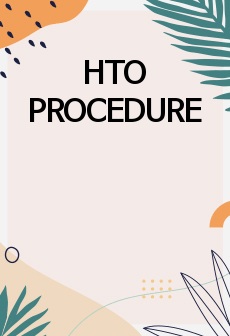Creative Problem Solving / Decision Making
*상*
다운로드
장바구니
소개글
Creative Problem Solving / Decision Making (Decision Sciences incorporating CPS)에 관련된 영문리포트로 영국 MBA학위과정에서 과제물로 제출되어 좋은점수 받았습니다. 많은도움되시길 바랍니다. Decision Making에 여러가지 모델들을 분석하고 적절한 사례분석을 통한 연구검토가 되어있는 과제물입니다.목차
Q.1 Decision Making Models: The Normative Model of Decision MakingQ.2 Decision Strategies, Unilateral Model, Brain Storming and Other Qualitative Techniques
Q.3 Rational Model of Decision Making
본문내용
Q.1 Decision Making Models: The Normative Model of Decision MakingDecision-making is utmost important to the organization progression and development. Organization progression from one development stage to another is known as "Organizational Life". The responsibility to steer the organization from one stage to another lies in the hands of managers. Their capabilities as decision-makers are measured by their ability to find efficient and progressive solutions for further development. It is therefore arguably that the single most important thing decision-makers do. And on a personal note, the quality of his decisions determines his success in the organization. Huber (1980) stated that there are two approaches to management decision making. The first is concerned with the development and application of standard decision rules based on formal logic derived from data, which is called the programmed decision. The second, which involves descriptive accounts of how people actually go about making decisions and choices, is known as the non-programmed decision. Managers` utmost concern in the decision making process is to ensure that the decision yields optimal results and the same is expected for all the decisions made.
참고 자료
Gray. J. and Strake. F. (1988), Organizational Behavior, Columbus, Ohio.Huber, G.P. (1980), Management decision making, Glenview, IL. Scott, Foresman and Co.
Robbins, S.P. (2002), Essential of Organizational Behavior, 6th edition, Prentice-Hall Inc. A Pearson Education Co., Upper Saddle River, New Jersey, pp. 74 and 75.
Stoner, A.F. and Freeman, R.E. (1989), Management, 4th edition, Prentice-Hall of India Private Limited, pp. 165 - 167.
Bateman, T.S. and Snell. S.A. (2004), "Managerial Decision Making" and "Planning and Strategic Management", Management, 6th edition, Mcgraw-Hill Companies, Inc., New York, USA, pp. 64 - 78 and 106 - 128.
Robbins. S.P. (2002), "Foundation of Individual Behavior", "Individual Decision Making", Essential of Organizational Behavior, 6th edition, Prentice-Hall Inc. A Pearson Education Co., Upper Saddle River, New Jersey, pp. 14 - 29 and 73 - 86.
Stoner, A.F. and Freeman, R.E. (1989), "Problem Solving And Decision Making", Management, 4th edition, Prentice-Hall of India Private Limited, pp. 163 - 187.
Stevens, T. (2003). Decision-Making. Retrieved September 13th, 2004, from http://front.csulb.edu/tstenens/wsps.htm
Stone, A.F & Freeman, R.E. (1989). Management, 4th edition, Prentice-Hall of India Private Limited.
Doherty, M. E. (1993). A laboratory scientist`s view of naturalistic decision making. In G. E. Klein, J. Orasanu, R. Calderwood, & C. E. Zsambok (Eds.), Decision making in action: Models and methods (pp. 362–388). Norwood, NJ: Ablex.
Lipshitz, R. (1997). Naturalistic decision making perspectives on decision errors. In C. Zsambok & G. Klein (Eds.), Naturalistic decision making (pp. 151–162) Mahwah, NJ Lawrence Erlbaum Associates.
Woods, D. D., Johannesen, L. J., Cook, R. I., & Sarter, N. B. (1994). Behind human error: Cognitive systems, computers, and hindsight. Wright-Patterson Air Force Base, Ohio: Crew Systems Ergonomics Information Analysis Center.
Rasmussen, J. (1997). Merging paradigms: Decision making, management, and cognitive control. In R. Flin, E. Salas, M. Strub, & L. Martin (Eds.), Decision making under stress: Emerging themes and applications (pp. 67–81). Aldershot, England: Ashgate.
Brehmer, B. (1992). Dynamic decision making: Human control of complex systems. Acta Psychologica 81, 211–241.
Brehmer, B., & Svenmarck, P. (1995). Distributed decision making in dynamic environments: Time scales and architectures of decision making. In J.-P. Caverni, M. Bar-Hillel, F. H. Barron, & H. Jungermann (Eds.), Contributions to decision making Vol. 1, (pp. 155–174). New York: Elsevier.
Klein, G. A., & Woods, D. D. (1993). Conclusions: Decision making in action. In G. A. Klein, J. Orasanu, R. Calderwood, & C. E. Zsambok (Eds.), Decision making in action: Models and methods (pp. 404–411). Norwood, NJ: Ablex.
Kleindorfer, P. R., Kunhreuther, H. C., & Schoemaker, P J (1993). Decision sciences: An integrative perspective. Cambridge, England: Cambridge University Press.
Woods, D. D., & Roth, E. M. (1993). Cognitive engineering: Human problem solving with tools. Human Factors, 30, 415–430.
Zachary, W. W., & Ryder, J. M. (1997). Decision support systems: Integrating decision aiding and decision training. In M. Helander, T. K. Landauer, & P. Prabhu (Eds.), Handbook of human-computer interaction, (2nd ed., pp. 1235–1258). New York: Elsevier.
Zsambok, C. E., & Klein, G. A. (Eds.). (1997). Naturalistic decision making. Mahwah, NJ: Lawrence Erlbaum Associates.
Cannon-Bowers, J.A., Salas, E., & Pruitt, J. S. (1996). Establishing the boundaries of a paradigm for decision-making research. Human Factors, 38, 193–205.
Connolly T, Routhieaux R. L., & Schneider S. K. (1993). "On the effectiveness of group brainstorming: Test of one underlying cognitive mechanism". Small Group Research, 24, 490-503.
Jennings D., and S. Wattam, Decision Making: An Integrated Approach, Pitman Pub., Financial Times, and Prentice Hall, 1998.
이 자료와 함께 구매한 자료
 의사결정 (decision-making) 12페이지
의사결정 (decision-making) 12페이지



















